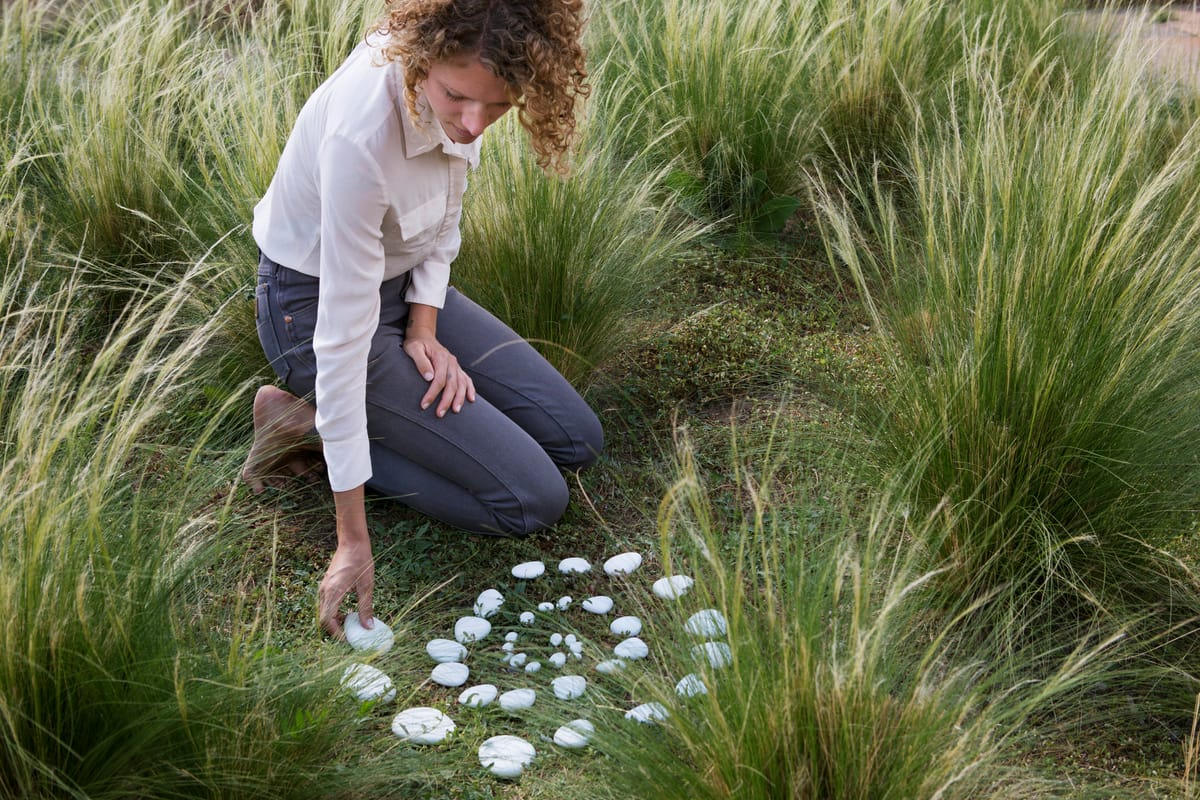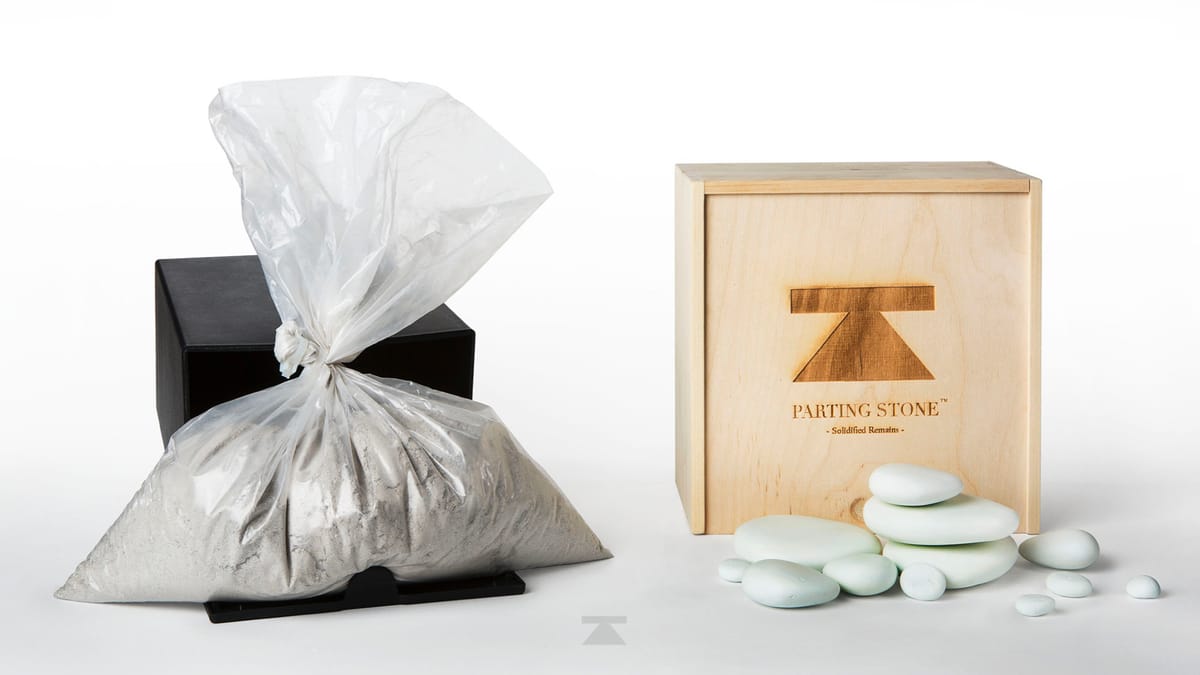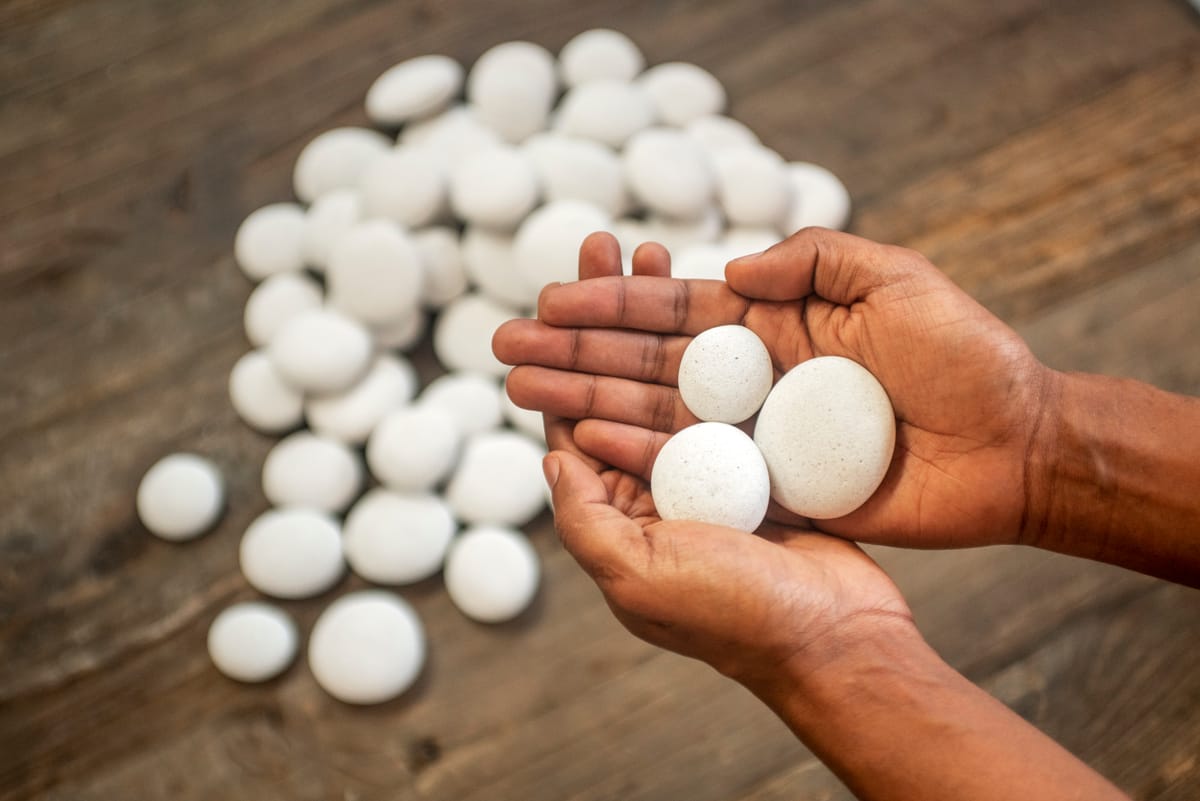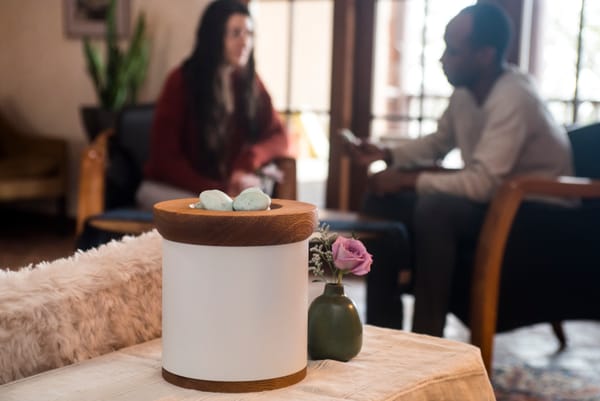What to Do with Ashes: 20 Meaningful Ways to Honor Your Loved One
Struggling with what to do with ashes? You're not alone. 75 million Americans have cremated remains stored at home. Our compassionate guide explores meaningful memorial options & innovative solutions like solidified remains.

From traditional burial to innovative solidified remains, discover 20 creative and meaningful options for what to do with cremation ashes. Your complete guide to honoring memory with dignity and comfort.
When Uncertainty Feels Heavy
If you're wondering what to do with ashes after cremation, you're facing one of grief's most personal decisions. Perhaps cremated remains have been sitting in your closet, basement, or mantle for months or even years. Maybe you're feeling uncertain, guilty, or simply overwhelmed by the weight of this choice.
You're not alone in feeling this way. Many families find themselves unsure about what to do with cremation ashes, and that uncertainty is completely understandable. This isn't just a practical decision. It's deeply emotional, and it matters. How you choose to honor your loved one's memory can profoundly impact your healing journey and the way you maintain connection with them.
There's no universal "right" answer, no timeline you must follow, and no wrong way to honor someone's memory. What matters is finding creative things to do with ashes that feel meaningful to you and your family, in your own time.
Reflections on love, loss, and the ways we carry them.
The weight of not knowing what to do with cremated ashes is something many families quietly carry, often longer than they admit. It’s not just about storage or logistics—it’s about the ache of wanting a tangible connection that feels both respectful and healing.
Ashes can feel abstract, even unsettling, which is why they so often remain hidden in closets or basements, accompanied by guilt and silence. But grief asks us to do something more tender: to find a ritual, a gesture, or a memorial that transforms uncertainty into meaning.
There is no deadline, no single “right way”—only the path that feels authentic to your love. And when the time comes, choosing with intention can ease the heaviness and open space for remembrance to become a source of comfort rather than anxiety.
Cathy Sanchez Babao
Parting Stone Grief Coach
Why Many Families Struggle with What to Do with Cremated Ashes
The uncomfortable truth is that millions of families struggle with what to do with cremated ashes. According to industry estimates, over 75 million Americans currently have cremated remains stored at home, many tucked away in closets, garages, or basements where they remain untouched for years.
This happens for understandable reasons. Cremains can feel abstract and difficult to connect with emotionally. The granular texture and bone fragments can be unsettling to look at or touch, creating a psychological barrier between families and their loved ones' remains. Many people describe feeling anxious about accidentally spilling ashes or uncomfortable about their appearance.
The emotional disconnect is real. Traditional cremated remains often don't provide the tangible connection families crave. Instead of bringing comfort, they can create additional stress and guilt. Family members may avoid dealing with the cremains altogether, leading to delayed grieving and missed opportunities for meaningful memorialization.
Hidden costs of inaction include:
- Ongoing guilt about "not doing anything" with the remains
- Missed opportunities for healing rituals and family connection
- Anxiety about what will happen to the ashes in the future
- Inability to create meaningful memorial traditions
- Family conflicts about eventual disposition decisions
This pattern of avoidance doesn't serve anyone well. Your loved one deserves a memorial that brings peace rather than anxiety, and you deserve things to do with cremated ashes that support your healing rather than compound your grief.

20 Meaningful Things to Do with Cremation Ashes
When exploring what to do with cremated remains, today's families have more meaningful choices than ever before. Here are 20 thoughtful ways to honor your loved one while supporting your family's emotional needs.
Traditional Ways to Handle Cremated Ashes
1. Cemetery Burial and Columbarium Niches Many families choose to bury cremated remains in a cemetery plot or place them in a columbarium niche. This provides a permanent location for visits and creates a lasting memorial site. Cemetery burial offers the security of perpetual care and a formal place for remembrance ceremonies.
2. Scattering Ashes in Meaningful Locations Scattering cremains allows families to return their loved one to a place that held special significance. Popular locations include favorite beaches, mountains, gardens, or family property. While emotionally meaningful, traditional ash scattering can be logistically challenging due to weather conditions, legal restrictions, and the practical difficulties of handling granular remains.
3. Traditional Urn Display at Home Traditional urns remain a popular choice for families who want to keep their loved one close. Modern urns come in countless styles, from simple wooden boxes to elaborate artistic pieces. However, many families find that urns become static objects that don't facilitate ongoing connection or interaction.
4. Dividing Ashes Among Family Members Many families choose to divide cremated ashes so multiple family members can create their own memorial approaches. This allows siblings, children, or close friends to each have a portion for personal remembrance while accommodating different grief styles and preferences.
Creative Things to Do with Cremated Ashes
5. Memorial Jewelry and Keepsakes Small portions of cremains can be incorporated into jewelry, glass pendants, or other keepsakes. This allows family members to carry a piece of their loved one with them while preserving the majority of remains for other memorial purposes.
6. Living Memorial Trees and Gardens Tree pods, memorial gardens, and reef installations transform ashes into new life. These options appeal to families seeking environmentally conscious memorials that create lasting natural legacies. You can plant a tree with cremated ashes or create a memorial garden where ashes nourish new growth.
7. Artistic Tributes and Custom Creations Cremated remains can be incorporated into paintings, sculptures, vinyl records, or other artistic memorials. These unique tributes create one-of-a-kind pieces that reflect the person's personality and interests. Artists can blend ashes into paint, ceramics, or glass artwork.
8. Memorial Fireworks Display Some companies specialize in incorporating cremated ashes into fireworks for a spectacular memorial celebration. This creates a unique opportunity for families to gather and honor their loved one with a beautiful, memorable display.
9. Memorial Diamonds and Gemstones Advanced technology can transform cremated ashes into synthetic diamonds or other gemstones. This process creates lasting, beautiful stones that can be set into jewelry or kept as precious keepsakes.
10. Memorial Tattoo Ink Some tattoo artists can blend a small amount of cremated ashes into tattoo ink, allowing family members to carry their loved one's memory in a deeply personal way through meaningful tattoo designs.
11. Memorial Reefs and Ocean Tributes Companies create artificial reefs incorporating cremated ashes, contributing to marine ecosystem restoration while creating lasting underwater memorials. These ocean tributes appeal to those who loved the sea.
12. Memorial Glass Art and Sculptures Skilled glassblowers can incorporate cremated ashes into beautiful glass sculptures, ornaments, or functional art pieces. These create stunning, unique memorials that can be displayed and treasured.
Innovative Memorial Solutions
13. Solidified Remains Solidification represents one of the most significant innovations in cremation memorialization, transforming traditional ashes into smooth, stone-like forms that are comfortable to touch, hold, and interact with. This process addresses many of the emotional and practical challenges families face with traditional cremated remains.
Instead of granular ashes that can feel disconnected and difficult to handle, families receive collections of beautiful, polished stones that feel natural and comforting to touch. These solidified remains can be shared among family members, carried as daily reminders, displayed in homes and gardens, or used for meaningful scattering ceremonies.
14. Memorial Space Flights Some companies offer memorial space flights where cremated ashes are launched into space, creating an extraordinary tribute for those who dreamed of the stars. These services range from suborbital flights to permanent placement in Earth's orbit.
15. Memorial Wind Chimes and Musical Tributes Cremated ashes can be incorporated into wind chimes, creating beautiful musical memorials that provide comfort through gentle sounds. These can be hung in gardens or homes where the wind creates ongoing musical remembrance.
16. Memorial Candles and Incense Small amounts of cremated ashes can be incorporated into specially crafted memorial candles or incense, creating opportunities for ceremonial remembrance and quiet reflection during anniversaries or special occasions.
17. Memorial Books and Paper Products Cremated ashes can be incorporated into handmade paper or bound into memorial books, creating unique keepsakes where family stories, photos, and memories can be preserved alongside your loved one's physical remains.
18. Memorial Quilts and Textiles Some artisans can blend small amounts of cremated ashes into fabric dyes or incorporate them into memorial quilts, creating soft, comforting textiles that provide physical warmth along with emotional connection.
19. Memorial Time Capsules Create a meaningful time capsule incorporating cremated ashes along with photos, letters, and mementos. These can be buried in special locations or stored for future generations to discover and remember your loved one.
20. Memorial Honeybee Hives or Butterfly Gardens Some families choose to scatter cremated ashes in pollinator gardens or near beehives, supporting local ecosystems while creating living memorials that contribute to environmental health and natural beauty.

Creating Your Decision Framework
Choosing what to do with ashes requires careful consideration of multiple factors. This framework can help guide your decision-making process:
Understanding Your Emotional Needs
What type of connection feels most important to you?
- Do you want your loved one's remains nearby for daily comfort?
- Would you prefer a permanent memorial site you can visit?
- Is sharing pieces of their memory with family members meaningful?
- Do you need something you can physically touch and hold?
Consider your grief timeline. Some memorial choices work better for immediate comfort, while others support long-term healing. There's no rush to make permanent decisions if you're not emotionally ready.
Family Dynamics and Preferences
How will other family members be involved? Memorial decisions often affect multiple people, especially when dealing with parents, grandparents, or siblings. Consider having open conversations about everyone's wishes and expectations.
Are there cultural or religious considerations? Some traditions have specific guidelines about cremation and memorial practices. Understanding these requirements early can help narrow your options.
What are the practical logistics? Consider factors like cost, timeline, legal requirements, and ongoing maintenance. Some memorial options require immediate decisions, while others allow for future flexibility.
Questions to Guide Your Choice
- What would your loved one have wanted?
- Which option brings you peace rather than additional stress?
- How important is it to have a physical memorial you can visit or touch?
- Do you want to keep the remains together or divide them among family?
- What fits within your budget and timeline?
- How will this choice affect your long-term healing process?
Remember, you can also choose multiple approaches. Many families divide cremated remains for different memorial purposes keeping some at home, scattering some in meaningful locations, and creating lasting tributes with others. What can you do with cremation ashes depends entirely on what brings your family comfort and connection.
What Makes a Memorial Truly Meaningful
Not all of these 20 things you can do with ashes provide the same emotional benefits. Understanding what creates lasting meaning can help you find meaningful memorial ideas that genuinely support your healing and connection.
The Power of Tangible Connection
Research in grief therapy consistently shows that physical, touchable connections to deceased loved ones provide unique comfort. This is why so many people treasure clothing, jewelry, or other personal items. They offer tangible links to memory and presence.
Traditional cremated remains often fail to provide this comfort because their appearance and texture can feel unsettling rather than soothing. Many families describe feeling reluctant to touch or interact with granular cremains, which limits their memorial potential.
Effective memorial forms:
- Feel natural and comfortable to touch
- Can be easily shared among family members
- Allow for spontaneous interaction and comfort
- Support both private and ceremonial remembrance
- Maintain dignity while facilitating connection
Shareability and Family Inclusion
Meaningful memorials bring families together rather than creating division. The best memorial choices allow multiple family members to participate in honoring memory while accommodating different grief styles and preferences.
Some families benefit from creating memorial "collections" where different family members receive pieces they can incorporate into their own remembrance practices. This approach honors the reality that people grieve differently and find comfort in various ways.
Flexibility for Life Changes
Life circumstances change over time, and effective memorials adapt to these transitions. Consider how your memorial choice will work if you move, as your family grows, or as your relationship with grief evolves.
Solidified remains offer unique advantages in this regard. Unlike traditional urns that become fixed objects, these collections can be easily transported, shared, and incorporated into new environments. Families often describe taking solidified remains on travels, placing them in new gardens, or sharing them during significant life events.
One family shared how they incorporated their loved one's solidified remains into their daughter's wedding ceremony, creating a meaningful way to include the absent parent in the celebration. Another family takes them on annual vacation trips, continuing travel traditions they shared with their deceased family member.
Natural Integration into Daily Life
The most healing memorials become naturally integrated into daily life rather than remaining as separate, formal tributes. This integration helps maintain ongoing connection and supports healthy grief processing.
Consider how different things to do with ashes of a loved one fit into your actual lifestyle. A cemetery plot requires intentional visits, while memorial jewelry or solidified remains can provide constant, gentle presence. Garden memorials connect with outdoor activities, while home displays integrate with daily living spaces.
Cindy, whose husband Steve's ashes were transformed into solidified remains, describes this integration: "I carry one with me wherever I go, and I have stacks of stones throughout my home, which brings me a sense of peace, as if Steve is always here with me. Unlike a grave or memorial site, I don't need to go somewhere specific to feel connected to him."
Her experience illustrates how the right memorial form can eliminate barriers between daily life and connection with loved ones. The stones became part of her routine rather than objects that required special visits or handling precautions.
Practical Steps for Moving Forward
Once you've identified the type of memorial that feels right, implementing your decision requires practical planning and emotional preparation.
Taking the First Step
Start with family conversations. If multiple family members are involved, schedule dedicated time to discuss everyone's feelings and preferences. These conversations can be emotional, so approach them with patience and openness.
Research your chosen option thoroughly. Whether you're exploring cemetery options, scattering locations, or innovative alternatives like solidified remains, understanding what you can do with human ashes and the complete process helps reduce anxiety and ensures informed decisions.
Consider timing carefully. Some families feel ready to make memorial decisions immediately, while others need months or years to process their loss. There's no "right" timeline, but avoid rushing into permanent decisions if you're feeling uncertain.
Professional Guidance and Support
Funeral directors and memorial specialists can provide valuable guidance about local options, legal requirements, and practical considerations. Many offer grief-sensitive consultation to help families explore choices without pressure.
Grief counselors and support groups can help you process the emotional aspects of memorial decision-making. Sometimes talking through feelings with a professional clarifies what type of memorial would be most healing.
Memorial service providers who specialize in innovative options often offer detailed consultations to help families understand newer alternatives like solidified remains, living memorials, or artistic tributes.
Family Communication Strategies
Be honest about your emotional state. Let family members know if you're feeling overwhelmed, uncertain, or need more time to process options.
Respect different grief styles. Some family members may want immediate action, while others need extended processing time. Both approaches are valid.
Consider creating family memorial traditions that can evolve over time. This might include annual remembrance ceremonies, shared memorial activities, or rotating care of memorial objects.
Document your decisions and reasoning. Future family members will appreciate understanding why certain choices were made and how they can continue honoring memory in meaningful ways.
Finding Peace in Your Choice
Every family's memorial journey is unique, and the "right" choice is the one that brings you and your loved ones comfort, connection, and peace. Trust your instincts about what feels meaningful, and remember that memorial decisions can evolve as your needs change.
Whether you choose traditional burial, meaningful scattering, cool things to do with ashes like solidified remains, or a combination of these 20 approaches, what matters most is that your choice supports your healing and honors your loved one's memory in a way that feels authentic to your relationship.
Your loved one's memory deserves something beautiful something that brings comfort rather than anxiety, connection rather than avoidance, and peace rather than ongoing uncertainty. Take the time you need to make this decision thoughtfully, knowing that choosing to move forward with memorialization is itself an act of love and healing.
If you're ready to explore unique things to do with ashes that provide tangible comfort and natural integration into daily life, consider learning more about innovative approaches like solidified remains that transform traditional cremated remains into beautiful, touchable forms. These solutions help families create lasting connections while supporting healthy grief processing and meaningful remembrance traditions.
Many families find that Parting Stone's solidification process offers the perfect balance of honoring their loved one while creating memorial forms that truly support their daily healing journey. The transformation preserves every bit of your loved one while making connection feel natural rather than difficult.

Frequently Asked Questions
How long can you keep ashes at home?
There's no time limit for keeping cremated remains at home. Many families keep ashes for months, years, or even decades while deciding on a meaningful memorial option. Take the time you need to make a decision that feels right for your family.
What is the most meaningful thing to do with ashes?
The most meaningful choice is deeply personal and varies from family to family. Some find comfort in keeping remains close through memorial jewelry or home displays, while others prefer scattering in special locations or transforming ashes into touchable forms like solidified remains. The right choice honors your unique relationship and supports your healing.
Can you divide ashes among family members?
Yes, cremated remains can be divided among family members. Many families choose to share portions so that everyone can create their own personalized approach to the memorial. This allows siblings, children, or close friends to each have a piece for personal remembrance while accommodating different grief styles and preferences.
What are creative memorial ideas for ashes?
Creative options include incorporating ashes into memorial jewelry, glass art, vinyl records, paintings, or tree plantings. Solidified remains offer unique possibilities for sharing, displaying, and carrying. Some families create memorial gardens, commission custom artwork, or use ashes in meaningful scattering ceremonies at special locations.
Is it legal to scatter ashes anywhere?
Laws vary by location. Generally, scattering is permitted on private property with permission, and many public lands allow it with proper permits. Ocean scattering requires being at least three nautical miles from shore. Always check local regulations and consider using funeral professionals who understand legal requirements.
What are solidified remains, and how are they different from regular ashes?
Solidified remains are cremated ashes transformed into smooth, stone-like forms through a specialized process. Unlike granular ashes that can feel unsettling to touch, solidified remains feel natural and comfortable, like river stones. They can be easily shared, carried, displayed, or scattered while preserving the full amount of your loved one's remains.
Do I need to decide ashes right away?
Absolutely not. There's no timeline you must follow for memorial decisions. Some families feel ready immediately, while others need months or years to process their grief before choosing a memorial approach. Take the time you need, and remember that keeping ashes at home indefinitely is entirely acceptable.
How much does it cost to do something meaningful with ashes?
Costs vary widely depending on your choice. Simple scattering or homekeeping costs very little, while memorial jewelry, artistic tributes, or specialized services like solidification typically range from hundreds to a few thousand dollars. Many families find that meaningful memorials are worth the investment for the comfort and connection they provide.
What if family members disagree about what to do with ashes?
Family disagreements are common and understandable. Consider dividing the ashes so different family members can pursue their preferred memorial approaches. Open, honest conversations about everyone's needs and grief styles often help find compromises. Sometimes waiting until emotions settle can also help families reach a consensus.
How do I know if I'm making the right choice?
The right choice brings you peace rather than additional stress, feels authentic to your relationship with your loved one, and supports your healing process. Trust your instincts, consider your practical needs, and remember that some memorial decisions can be changed or expanded over time. If a choice reduces your anxiety about the ashes and helps you feel connected to your loved one's memory, it's likely right for you.
If you're considering solidified remains as a memorial option, learn more about how the process works or read stories from other families who have found comfort in this innovative approach to honoring memory.









